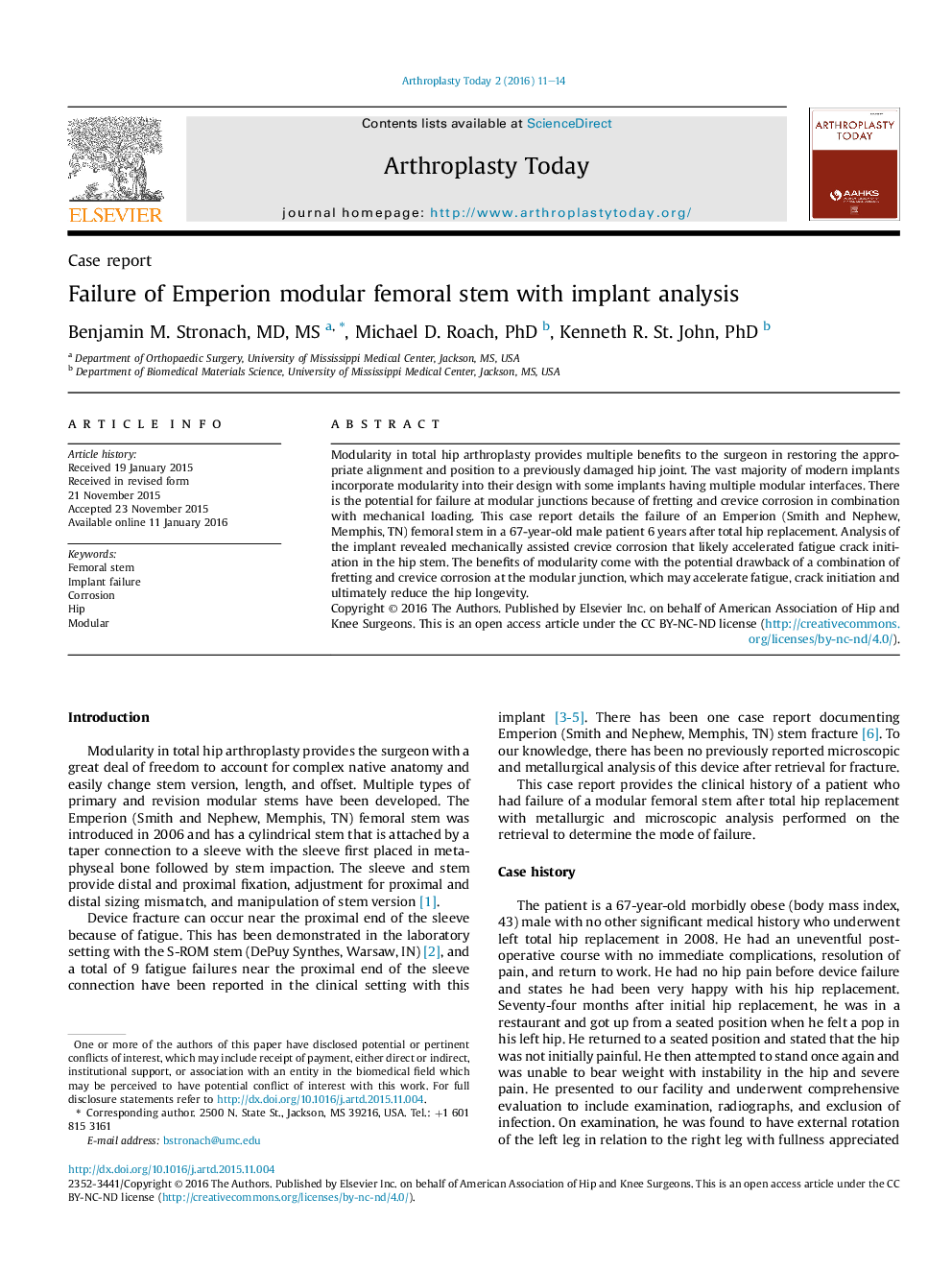| Article ID | Journal | Published Year | Pages | File Type |
|---|---|---|---|---|
| 4041596 | Arthroplasty Today | 2016 | 4 Pages |
Modularity in total hip arthroplasty provides multiple benefits to the surgeon in restoring the appropriate alignment and position to a previously damaged hip joint. The vast majority of modern implants incorporate modularity into their design with some implants having multiple modular interfaces. There is the potential for failure at modular junctions because of fretting and crevice corrosion in combination with mechanical loading. This case report details the failure of an Emperion (Smith and Nephew, Memphis, TN) femoral stem in a 67-year-old male patient 6 years after total hip replacement. Analysis of the implant revealed mechanically assisted crevice corrosion that likely accelerated fatigue crack initiation in the hip stem. The benefits of modularity come with the potential drawback of a combination of fretting and crevice corrosion at the modular junction, which may accelerate fatigue, crack initiation and ultimately reduce the hip longevity.
